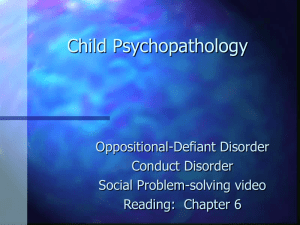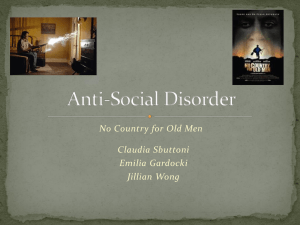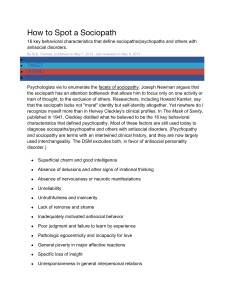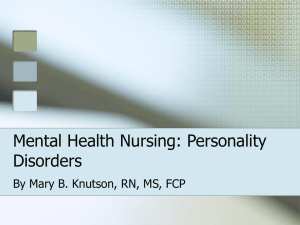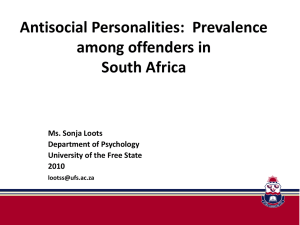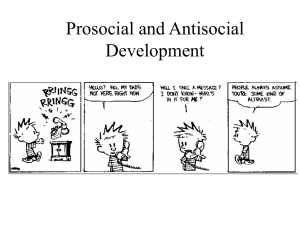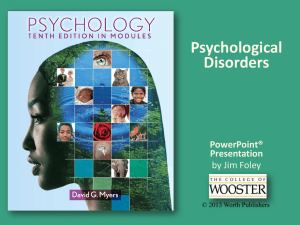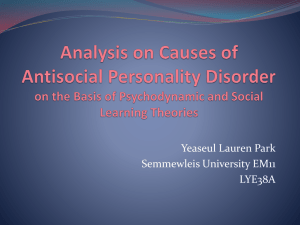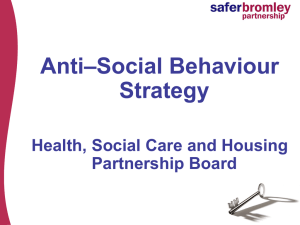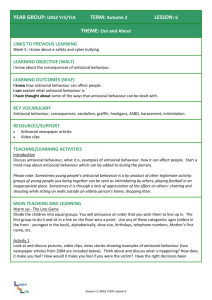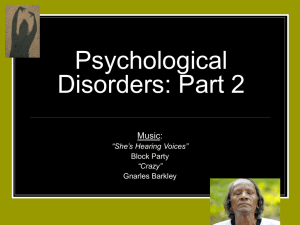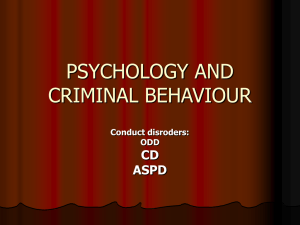Antisocial Personality Disorder
advertisement
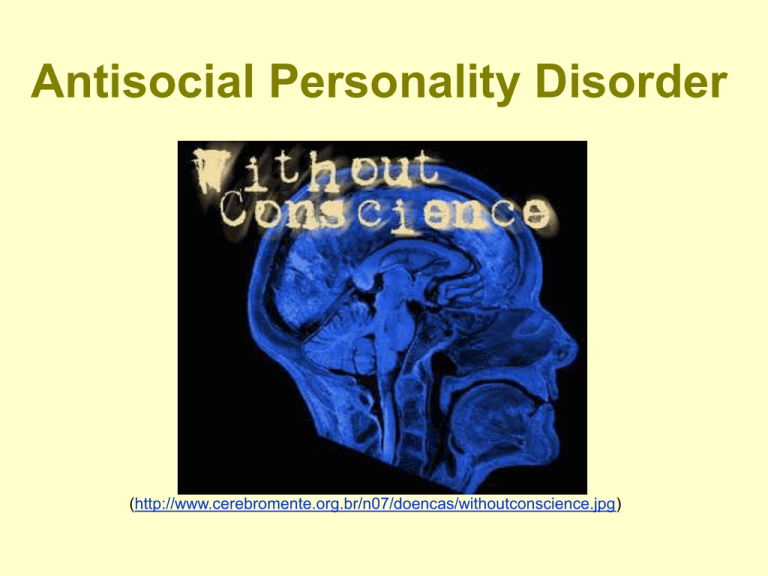
Antisocial Personality Disorder (http://www.cerebromente.org.br/n07/doencas/withoutconscience.jpg) Antisocial Personality Disorder: • Also referred to as sociopathy or psychopathy • Individuals exhibit antisocial behaviour Antisocial Behaviour: • Verbally or physically harmful to others, animals and/or property • Seriously violates social expectations or norms • Two components: – Presence of antisocial behaviour – Absence of prosocial behaviour • Natural for children to exhibit some antisocial behaviour during development • High levels of antisocial behaviour considered a clinical condition • Antisocial personality disorder is only diagnosed in adults, but bears resemblance to conduct disorder • Approximately 4% of the population suffers from antisocial personality disorder – 3% men – 1% women Oppositional-Defiant Disorder: • Sufferers: Young children hostile towards authority • Can lead to conduct disorder Conduct Disorder: • Sufferers: Older children who lie, steal and behave violently. • A small number of these children who do not improve with maturation develop antisocial personality disorder (http://gswt01.tripod.com/Images3/tantrum3.gif) Causes: • Family problems: unstable marriage, harsh/inconsistent discipline child abuse (physical or sexual), frequent changes in residence or primary caregiver, learning disabilities etc. • Neurological disorders, low IQ, low socioeconomic status and having a parent who suffers from the disorder or substance abuse increases the likelihood of developing antisocial personality disorder • A child may behave antisocially for a period of time when a stressor occurs, but this is not considered a clinical condition Stressor: traumatic event in one’s life such as the death of a parent RIP Sources (pics, left to right): (http://www1.istockphoto.com/file_thumbview_approve/1639286/1/istockphoto_1639286_fun_cartoon_house.jpg) (http://www.cs.princeton.edu/gfx/proj/sugcon/models/brain.png) Symptoms: • Non conformity to social norms • Deceitful and manipulative towards others, often to get something (ex. money, drugs) • Impulsive, long list of past residences and employments • Irritable, aggressive and engages in physical violence • A reckless disregard for the safety of themselves and others • Consistently irresponsible, inability to hold down or find a job, fails to do such things as pay bills • No conscience • Shows few feelings beyond contempt for others (http://www.truthinjustice.org/handcuffs.gif) Treatments and Therapies: Children and Adolescents: • Possible if intervention is soon enough, though difficult • Primary treatment: therapy – Goal: to develop positive behaviour to replace negative ones – Systematic, designed to improve communication within a group, often the family or a group of similar children – Methods include: modeling, role-playing, corrective feedback and reinforcement systems – Success is largely dependent on the cognitive capacity and emotional development of the individual • Most severe cases medication used to control behaviour Adults: • Extremely difficult to treat • Often a chronic condition • Some medications aid in controlling behaviour • However, non compliance and abuse prevent widespread use
